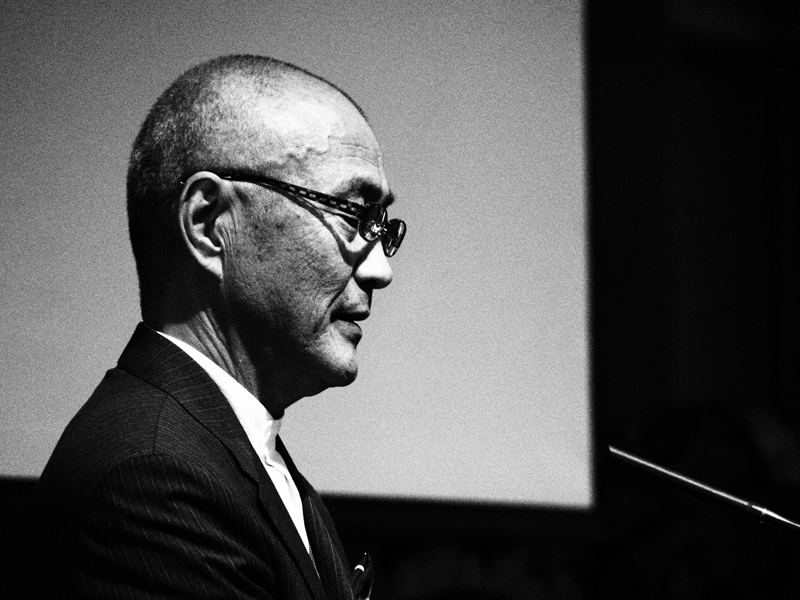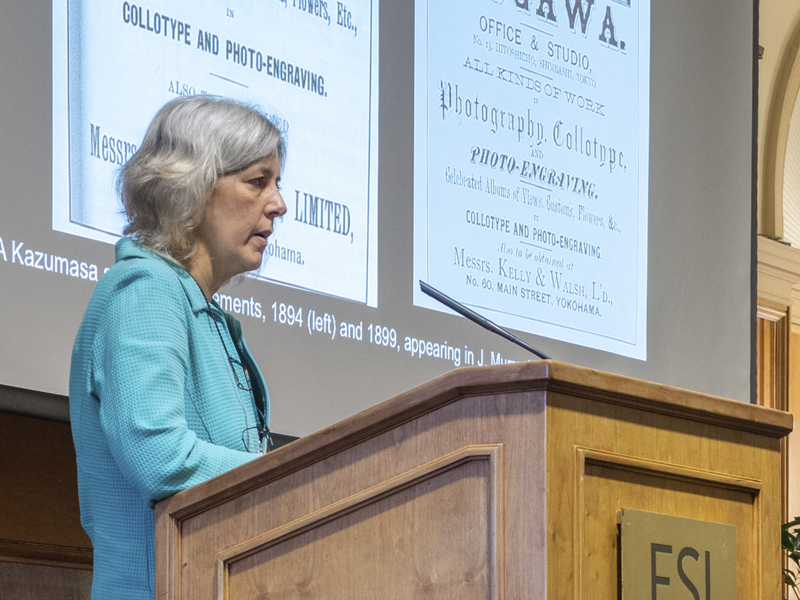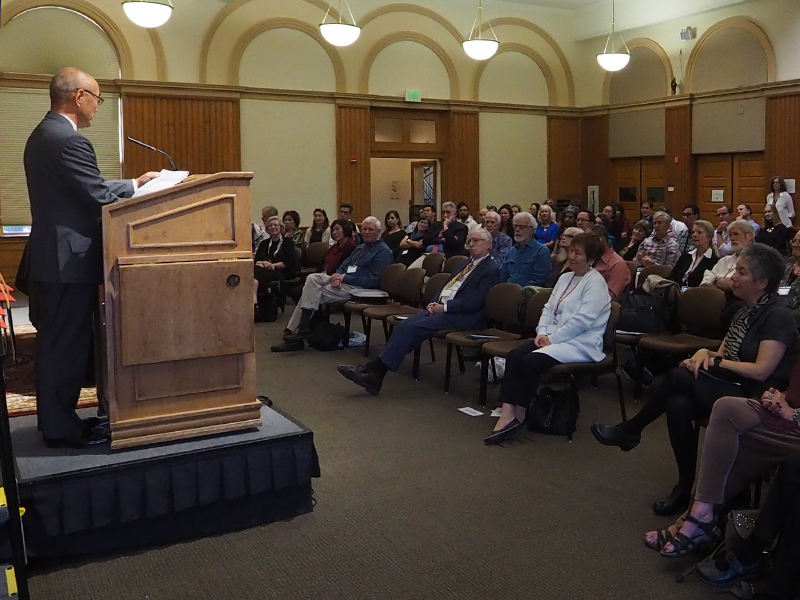Toshizo Watanabe Symposium
“Celebrating the World through Japanese Art”
by Miri Nakamura
On October 20, 2018, the IUC held the Toshizo Watanabe Symposium at Stanford University to celebrate the establishment of the Toshizo Watanabe Fellowship Program with a generous $10 million endowment gift. The symposium, titled “Celebrating the World through Japanese Art,” featured talks by five leading alumni specialists of Japanese art history and theater: Louise Cort (’68), Curator for Ceramics at The Freer Gallery of Art and Arthur M. Sackler Gallery, David Crandall (’76), Founding Member of Theater Nohgaku, Karen M. Fraser (’02), Assistant Professor of Asian Art at University of San Francisco, Jonathan Reynolds (’81), Professor of Art History at Barnard College/Columbia University, and Emily Sano (’64), Coates-Cowden-Brown Senior Advisor for Asian Art at the San Antonio Museum of Art. IUC Senior Advisor Gerald L. Curtis (’65), Burgess Professor Emeritus of Political Science at Columbia University, gave the introductory remarks. Executive Director Indra Levy gave the concluding remarks and IUC Leadership Board Chairman Andrew J. Hazelton (’05) led the toast at the reception. Numerous books published by IUC alumni were on display during the symposium and reception, which featured live music by the Murasaki Ensemble, a koto-centered performance group.
Over a hundred guests filled the room to listen to the invigorating lectures by the five scholars. Reynolds opened the symposium with a talk on American marine zoologist Edward Sylvester Morse’s writings on Japan. Fraser followed with analysis of photographs contained in the 1892 English-language publication of the famous tale of The Forty-Seven Ronin. David Crandall offered an amazing noh performance to accompany his presentation on Gettysburg, a play he composed about the American Civil War. The latter half of the program comprised Louise Cort discussing her research on the ceramic traditions of Shiragaki, a high valley in the mountains southeast of Kyoto, and an insightful talk by Emily Sano on the strong interest in Japanese language and culture at the university level and the necessity for future scholarship in Japanese art. All focused on the dialogue between Japanese art and the United States to commemorate Toshizo Watanabe’s commitment to strengthening the relationship between the two countries.
The most awaited moment of the symposium was the philanthropist’s own words at the end. In his speech, Watanabe described his inspirations in life: his mother, who taught him the value of hard work; Steve Jobs, whose background and philosophy deeply impressed him; Lawrence Wien, the founder of the Wien International Scholarship Program that funded Watanabe’s studies at Brandeis University; and Konosuke Matsushita, the founder of Panasonic, who also provided financial assistance for him to study in the U.S. Many years after graduating from Brandeis, Watanabe was moved to hear from Wien that the “greatest satisfaction came not from making money in business, but from his scholarship programs,” and he decided to follow in his mentor’s footsteps. What was in turn moving to all who heard Watanabe’s own words was the joy he clearly takes in his philanthropic work: “to give the gift of education to others—this is what fulfills my soul. This is what makes me feel valuable.” He concluded with inspired remarks on the value of education: “We never know the path our lives will take! However, we do know that education, from life itself, and formally, makes us rich in our minds, and in our souls. Life itself is a teacher. Hopefully, all of us, as students of the many teachers in our lives, take the wealth of our education, knowledge and experience, and go out into the world and live a life that matters!” The recognition bestowed on the IUC by Toshizo Watanabe’s generosity is a mark of distinction that we will honor by providing advanced Japanese language education to students who will go on to put their newfound knowledge in service to the wider world.
 |
 |
 |
 |
 |
 |
 |
 |
 |
 |
 |
 |
 |
 |
 |
 |
